
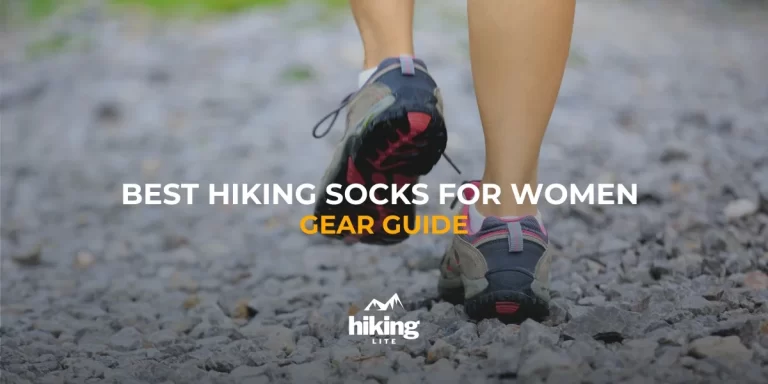
Picking the right hiking socks can really impact how enjoyable your trip is, so it’s crucial to find ones that keep your feet feeling good.
You should think about a few important things like keeping your feet dry, having enough padding, making sure they fit well, using strong materials, and making sure they work well with your shoes.
The best socks will stop blisters and make long hikes feel less tiring.
This guide will show you some of the best lightweight socks out there to match what your feet need.
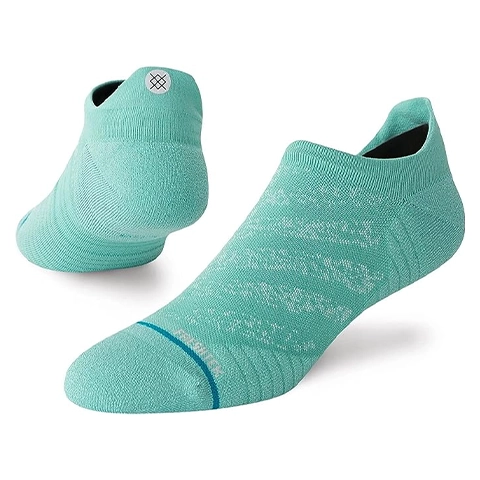
Key Specs
Weight: 0.7 ounces (20 grams)
Material: 81% nylon, 13% polyester, 6% elastane
Price: $$
PROS
✅ Ultralight
✅ Good moisture control
✅ Good quality
CONS
❌ Not for cold weather
The Stance Run Light Tab socks are an ideal choice for hiking and other outdoor activities. As an ultralight option, they keep feet comfortable even on longer excursions without adding unnecessary bulk or weight.
Several key features stand out with these socks. Stance utilizes Infiknit technology, which provides durability and resistance to tears over repeated use.
They also feature Feel360 moisture-wicking to keep feet dry and prevent odor-causing bacteria growth. In testing, I found these socks effectively kept my feet from getting soggy on the trail.
These Stance socks have a great heel tab design that stays securely in place, preventing uncomfortable bunching or slipping during long hikes, which can cause blisters and hot spots.
One note is that these are designed for three-season wear.
Overall, the Stance Run Light Tab socks deliver excellent comfort and feet-protection features for day hikes and running in an ultralight package.
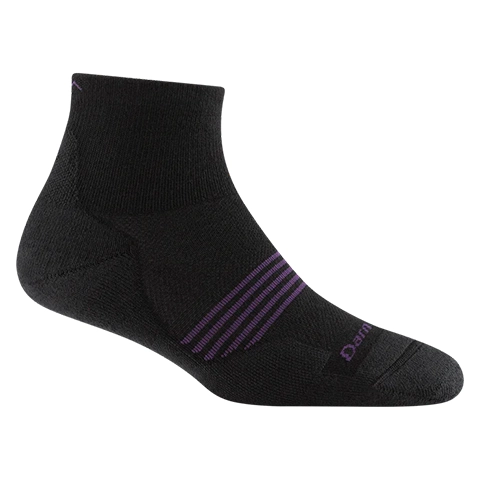
Key Specs
Weight: 1.55 ounces (44 grams)
Material: 56% merino wool 41% nylon 3% lycra spandex
Price: $$
PROS
✅ Comfortable
✅ Merino blend
CONS
❌ Often sold out
❌ OK durability
I wanted to try the Darn Tough hiking socks since they’re supposed to be really comfortable and durable. These socks are lightweight, which is good because it keeps your feet from overheating on long hikes.
The material is special merino wool that pulls sweat away from your skin. This kept my feet feeling fresh even though it was a warm day. The fit wraps your feet nicely without being too tight. It has good arch support too.
I took these socks on a three day backpacking trip. My feet stayed dry the whole time and the socks didn’t start to smell at all. They felt great to walk in. The only problem is they seemed to get thin really fast in certain spots.
Considering their performance, we recommend these high-quality socks for hiking, despite their tendency to wear out relatively quickly.
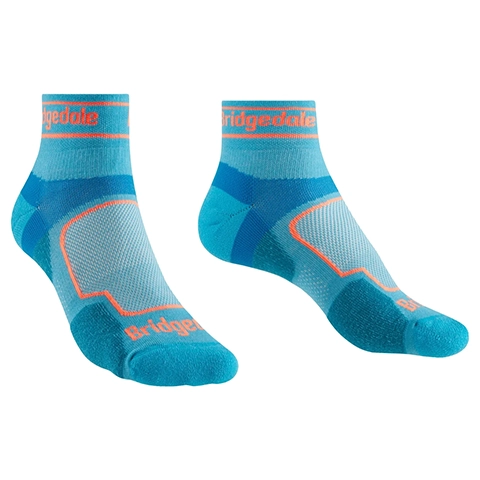
Key Specs
Weight: 1.13 ounces (32 grams)
Material: 37% polyester/COOLMAX, 60 % nylon/polyamide, 3% lycra/elastane
Price: $
PROS
✅ Ultralight
✅ Toe guard feature
CONS
❌ Not for cold weather
I was in the market for new trail socks and decided to try the Bridgedale Coolmax model. Its features like targeted cushioning, breathability and durability seemed well-suited for long hiking days.
The socks have thin padding under pressure areas such as the toes and heels. Mesh ventilation helps keep feet dry. The fit provides secure coverage without constriction.
On hikes, the cushions noticeably supported my feet over rough sections. Moisture-wicking kept skin fresh even after hours. The reinforced toe held up to rugged terrain.
After laundering, the shape has remained intact. The durable materials should provide long-lasting wear. These socks could suit hikers seeking lightweight comfort for variable paced trails.
In general, the Bridgedale design lived up to its promises. Just avoid using them in cold weather.
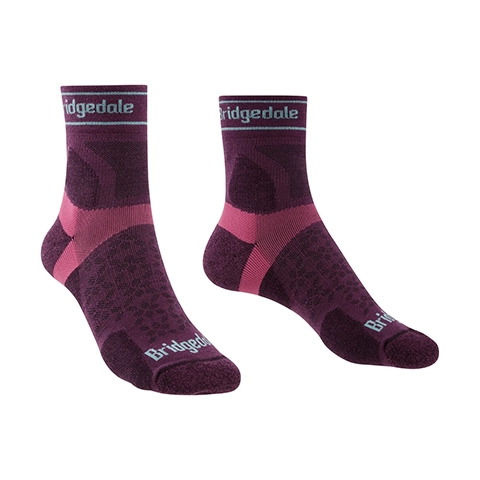
Key Specs
Weight: 1.41 ounces (40 grams)
Material: 33% merino wool, 64% nylon/polyamide, 3% lycra/elastane
Price: $
PROS
✅ Merino blend
✅ Greath length
✅ Odor control
CONS
❌ Not the cheapest option
I tried the Bridgedale Trail Run merino socks made for running on tough trails. These socks are designed with serious athletes in mind who like to move quickly over rough terrain.
They have thin padding only where needed, under the toes and heels. Airflow vents help too. Together this offers great protection and breathability. The merino wool blend keeps feet feeling fresh no matter how sweaty it gets.
An ankle-hugging fit with a reinforced top edge provided stability as I powered over hard ground. My feet felt supported without anything slipping around inside. Even after washing, the shape stayed the same which is nice for long-lasting gear.
Despite being wool, these ended up working well for warmer weather trips too. The only downside is the higher price compared to other trail socks. But serious hikers might think the comfort and durability makes it worth the cost.
These Bridgedale socks provided the cushioning and moisture control I needed for fast-paced trail exploration, so we are comfortable recommending them.
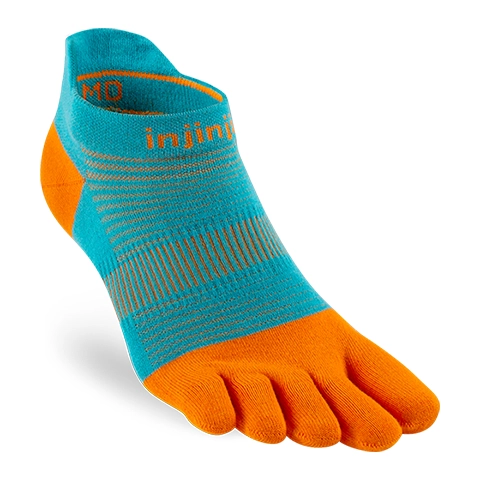
Key Specs
Weight: 1.09 ounces (31 grams)
Material: 35% polyester/COOLMAX, 63% nylon, 2% lycra
Price: $
PROS
✅ Great design
✅ Least blisters
CONS
❌ Not for cold weather
Seeking comfortable socks for an upcoming hiking fundraiser, I chose to try the Injinji Run Lightweight model. Its separated toe design and breathable fabrics seemed well-suited for preventing blisters over long distances.
During multiple training hikes up to 10 miles each with a relatively heavy pack, I encountered no hot spots or irritation in these socks paired with trail shoes. Their construction provided padding and support without pinched toes.
Interestingly, the socks also performed well on an unplanned 20-mile outing in a heavy rainstorm. With feet soaked inside waterlogged shoes, blisters seemed inevitable. However, the fabric maintained its moisture-wicking function and my feet remained complaint after 16 additional wet miles.
I’ve hiked nearly 100 miles in these socks, and only one has a small hole. Since the overall quality is excellent, we can recommend these socks wholeheartedly.
There are a few key things to consider when picking out hiking socks: sock height, cushioning, materials, and fit.
Sock height is important to match with your shoes. If your shoes are low or mid-cut, ankle socks work well. But for high-cuffed shoes, taller crew socks provide extra warmth and protection.
The level of cushioning should suit your hike conditions. Lightweight socks with no padding are best for hot weather. But choose thickly cushioned socks for colder climates.
Materials like wool, synthetic fabrics, silk, or spandex are good options. Pick what works best for your feet.
A proper fitting sock prevents issues too. Look for a snug fit without bunches or looseness. This helps socks from causing blisters or discomfort while hiking.
If you’re looking for more detailed guidance on buying socks, check out our post here.
Whether day hiking in wintertime or tackling a multiday snowy trek, socks designed for cold conditions are key to keeping feet warm and comfortable. Look for those containing moisture-wicking merino wool or synthetic insulation to trap body heat. Thicker wool pairs with extra padding in toe and heel stay cozy down to freezing while allowing breathability. For extremely frigid adventures, thermoregulating socks with fleece lining or removable foil liners raise insulation levels. Choose sizes that do not restrict circulation but offer snugness to block cold. Take multiple pairs to alternate between for long outings in icy alpine regions. The right cold weather socks ensure toes stay toasty even in winter’s chilliest weather.
When choosing hiking socks for women, it’s important to pick ones that will help prevent blisters. Blisters can really ruin a hike! Some key things to look for are moisture-wicking fabrics like merino wool or polyester. These types of fabrics will keep your feet dry even after sweating a lot. Make sure the socks fit your feet well too – too loose and your feet will slide around in your shoes, too tight and they’ll rub. Cotton socks should be avoided since cotton holds moisture. Opt for padded areas in the toes and heels to cushion those pressure points. Breaking in new socks around the house before a big hike is also wise. With the right sock choices and a proper fit, your feet can enjoy blister-free trails.
When choosing socks for hiking, look for pairs specially designed for women’s feet and hiking boots (or trail runners). Opt for socks with blister-resistant fabrics like wool or synthetic blends, adequate cushioning in the heels and toes for impact absorption, and strategically placed seamless zones to avoid irritation. Good moisture-wicking and breathability will keep feet dry when the trekking gets adventurous. For long backcountry excursions, reinforcements in high-wear areas enhance sock durability as essential hiking gear. The right women’s socks are height-matched to your footwear for a perfect fit to blister-proof each hiking adventure.